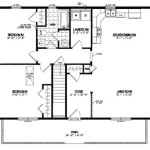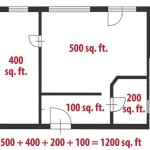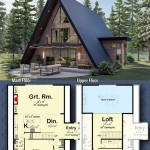Simple Site Plan Example: A Comprehensive Guide
A site plan is a detailed architectural drawing that outlines the existing and proposed conditions of a specific parcel of land. It serves as a critical document for various purposes, including obtaining building permits, guiding construction activities, and facilitating communication among different stakeholders involved in a project. A simple site plan example can demonstrate the fundamental elements and information conveyed within such a drawing, providing a valuable learning tool for those new to land development, construction, or urban planning.
Site plans are not merely decorative; they are legally binding documents that depict the intended use and modification of a property. Local governments and regulatory agencies often require site plans to ensure that proposed developments comply with zoning ordinances, building codes, and environmental regulations. Therefore, accuracy and thoroughness are paramount when creating a site plan.
The complexity of a site plan can vary greatly depending on the nature and scale of the project. A simple site plan, for instance, might illustrate the location of a single-family home on a residential lot, including driveway placement, landscaping features, and setbacks from property lines. Conversely, a complex site plan for a commercial development could encompass multiple buildings, parking areas, utility infrastructure, stormwater management systems, and detailed topographical information.
Understanding the key elements and purpose of a site plan is essential for anyone involved in land development or construction. This article delves into a simple site plan example, highlighting the core components and principles involved in its creation and interpretation.
Key Point 1: Essential Elements of a Simple Site Plan
A simple site plan, despite its name, must include several crucial components to be effective and compliant. These elements provide a clear and concise overview of the property and proposed improvements. The following list highlights the most essential elements:
Property Lines and Boundaries: The cornerstone of any site plan is the accurate depiction of the property lines. These lines define the legal limits of the property and are typically derived from a survey conducted by a licensed surveyor. The site plan must clearly indicate the bearing and distance of each property line, providing a definitive representation of the property’s shape and size.
Existing Structures: Any existing buildings, structures, or features located on the property must be accurately shown on the site plan. This includes the dimensions, location, and orientation of these elements. Information regarding the type of construction, roof material, and foundation type are sometimes included for existing structures depending on the purpose of the site plan.
Proposed Structures: The site plan should clearly illustrate the location, size, and configuration of any proposed buildings or structures. Dimensions, setbacks, and building heights are essential details that must be accurately represented. The proposed structure's purpose should also be clearly stated (e.g., single-family home, garage, shed).
Setbacks: Setbacks are the minimum distances that a structure must be located away from property lines, roads, or other features. These setbacks are typically dictated by local zoning ordinances and ensure proper spacing between buildings and protect public safety. The site plan must clearly indicate all required setbacks and ensure that the proposed structures comply with these regulations.
Easements: Easements are legal rights granted to other parties to use a portion of the property for a specific purpose, such as utility lines or access roads. The site plan must identify and depict the location of any existing easements on the property. This is crucial as any proposed construction must not interfere with these easements.
Roads and Driveways: The site plan should show the location of adjacent roads, driveways, and parking areas. The width and alignment of the driveway must be drawn according to local regulations, and its connection to the public road must be clearly indicated.
Utilities: The location of existing and proposed utility lines, such as water, sewer, gas, and electricity, should be indicated on the site plan. This information is essential for coordinating utility connections and avoiding conflicts during construction. Utility companies often require detailed information about the proposed utility layout before approving a permit.
Topography: While a simple site plan may not include detailed contour lines, it should provide some indication of the property's topography, such as the general slope and any significant changes in elevation. This information is essential for determining drainage patterns and ensuring proper stormwater management.
North Arrow and Scale: Every site plan must include a north arrow to indicate the orientation of the property. A scale must also be provided to allow accurate measurement of distances on the drawing. These elements are fundamental for understanding the site plan's layout and dimensions.
Legend: A legend is a key that explains the symbols and abbreviations used on the site plan. This is essential for interpreting the information presented on the drawing and ensuring that all stakeholders understand the plan's details.
Contact Information: The site plan should include the contact information of the property owner, the architect or designer, and the surveyor (if applicable). This information allows for easy communication and clarification of any questions or concerns.
Key Point 2: Purpose and Applications of a Simple Site Plan
A simple site plan serves a variety of purposes and applications, depending on the specific project and context. Understanding these applications is crucial for appreciating the value and importance of a well-prepared site plan.
Building Permits: Obtaining a building permit from the local government is often the primary reason for creating a site plan. The site plan provides the regulatory agencies with the necessary information to assess whether the proposed development complies with applicable zoning ordinances, building codes, and environmental regulations. It demonstrates that the project meets the minimum requirements for safety, health, and welfare.
Construction Guidance: The site plan serves as a guide for contractors and construction workers during the construction process. It shows the precise location of buildings, utilities, and other features, ensuring that the construction is carried out according to the approved design. The site plan helps prevent costly errors and delays by providing a clear and accurate blueprint for the project.
Communication Tool: A site plan facilitates communication among various stakeholders involved in the project, including the property owner, architect, contractor, engineers, and regulatory agencies. It provides a common visual reference point for discussing the project's details and resolving any issues. The site plan ensures that everyone is on the same page and understands the project's scope and objectives.
Property Records: The approved site plan becomes part of the property records maintained by the local government. It serves as a historical document that outlines the development of the property over time. This information is valuable for future property owners, developers, and researchers.
Real Estate Transactions: A site plan can be a valuable asset during real estate transactions. It provides potential buyers with a clear understanding of the property's layout, dimensions, and potential for future development. A well-prepared site plan can enhance the property's marketability and value.
Landscaping Design: The site plan can be used as a base for developing a landscaping plan. It shows the location of existing trees, shrubs, and other vegetation, as well as the proposed location of new landscaping features. The landscaping plan can enhance the property's aesthetics, improve its environmental performance, and increase its value.
Stormwater Management: The site plan is essential for designing and implementing stormwater management systems. It shows the topography of the property, which is crucial for determining drainage patterns and designing effective stormwater runoff controls. The site plan helps ensure that the project does not contribute to flooding or water pollution.
Key Point 3: Considerations for Creating a Simple Site Plan
Creating an accurate and effective simple site plan requires careful consideration of several factors. These considerations ensure that the site plan meets the requirements of the project and complies with applicable regulations.
Accuracy: Accuracy is paramount when creating a site plan. The dimensions, locations, and elevations of all features must be accurately measured and depicted on the drawing. Errors in the site plan can lead to costly mistakes during construction and potential legal issues.
Compliance: The site plan must comply with all applicable zoning ordinances, building codes, and environmental regulations. These regulations dictate the allowable uses of the property, the required setbacks, the maximum building height, and other design parameters. Failure to comply with these regulations can result in project delays or denial of permits.
Clarity: The site plan must be clear and easy to understand. The symbols, abbreviations, and annotations used on the drawing should be consistent and well-defined. The site plan should be organized logically and visually appealing.
Completeness: The site plan must include all the essential information required by the local government and other stakeholders. This includes the property lines, existing and proposed structures, setbacks, easements, utilities, topography, north arrow, scale, and legend.
Professional Expertise: While it is possible to create a simple site plan without professional assistance, it is often advisable to hire a qualified architect, surveyor, or engineer. These professionals have the expertise and experience to ensure that the site plan is accurate, compliant, and effective.
Local Regulations: Understanding the local regulations and requirements is crucial for creating a compliant site plan. Each jurisdiction has its own unique set of rules and guidelines, which must be followed meticulously. Contacting the local planning department or building department is essential for obtaining the necessary information.
Environmental Considerations: The site plan should consider potential environmental impacts and incorporate measures to mitigate these impacts. This includes protecting sensitive areas, managing stormwater runoff, and minimizing erosion. Sustainable design principles should be incorporated into the site plan whenever possible.
Future Development: The site plan should consider the potential for future development of the property. This includes planning for future expansions, additions, or modifications to the existing structures. A well-planned site can accommodate future growth and changes without requiring significant alterations.
By carefully considering these factors, one can create a simple site plan that effectively communicates the project's details, complies with applicable regulations, and facilitates successful implementation.

Simple Site Plan Tacoma Permits

Site Plans What They Are And How To Create One

Basic Site Plan Ideal Drafting

Basic Site Plan Ideal Drafting

Site Plan Designing Buildings

Drawings Site Plans Floor And Elevations Tacoma Permits

Site Plan

Site Plans

20 Rendered Site Plan Examples Ideas How To Architecture

Simple Plot Plan Drawn By Our Designers And Emailed As A Within 1 Working Day Mysiteplan
Related Posts








